Overview
Navigating the process of applying for disability benefits can feel overwhelming, but you are not alone in this journey. This article outlines a comprehensive five-step process designed to guide you through each stage with care and understanding.
- First, it’s essential to understand the types of benefits available to you.
- Next, we will help you determine the eligibility requirements that apply to your situation.
- Gathering necessary documentation is crucial. We emphasize the importance of thorough documentation, as it significantly enhances your chances of approval.
- After that, submitting your application effectively is key.
- Finally, following up on your application status ensures you stay informed throughout the process.
Each step is supported by specific guidelines and statistics, such as average processing times, to help you feel more prepared. Remember, careful preparation and proactive engagement can make a difference. We’re here to help you every step of the way.
Introduction
Navigating the complex landscape of disability benefits can feel overwhelming. We understand that millions of Americans are facing long-term health challenges, and the journey to secure financial assistance can be daunting. It's crucial to comprehend the different types of benefits available, such as Social Security Disability Insurance (SSDI) and Supplemental Security Income (SSI).
However, many applicants encounter obstacles along the way. With an estimated 65-70% of initial SSDI requests being denied due to incomplete applications, it's common to feel frustrated and unsure. So, how can you successfully maneuver through this intricate process to secure the support you need?
This guide outlines essential steps to enhance your chances of a successful application. We want to empower you to take control of your financial future, knowing that you are not alone in this journey.
Understand Types of Disability Benefits
Before applying for disability benefits, we understand that it’s essential to grasp the two primary types available to you:
-
Social Security Disability Insurance (SSDI): This program is specifically designed for individuals who have worked and paid Social Security taxes. To qualify, you must have a medical condition that prevents you from working for at least 12 months. In 2025, an estimated 5 million Americans are expected to pursue SSDI assistance, highlighting the program's importance for those facing long-term disabilities. Moreover, SSDI assistance is anticipated to rise by 2.5% due to the cost-of-living adjustment (COLA), which will aid recipients in managing escalating living costs.
-
Supplemental Security Income (SSI): This program provides financial assistance to individuals with limited income and resources, regardless of their work history. It is particularly beneficial for those who are disabled, blind, or aged 65 and older. As of 2025, nearly 7.5 million recipients are projected to benefit from SSI, underscoring its role in supporting vulnerable populations. It’s important to note that SSI income limits may also be adjusted in 2025, which could affect eligibility.
Understanding how to apply disability options will assist you in determining which program best aligns with your circumstances and needs. Remember, the average processing time for SSI or SSDI applications is typically between 3 to 5 months, so planning ahead is crucial. You're not alone in this journey; we’re here to help you navigate these important decisions.
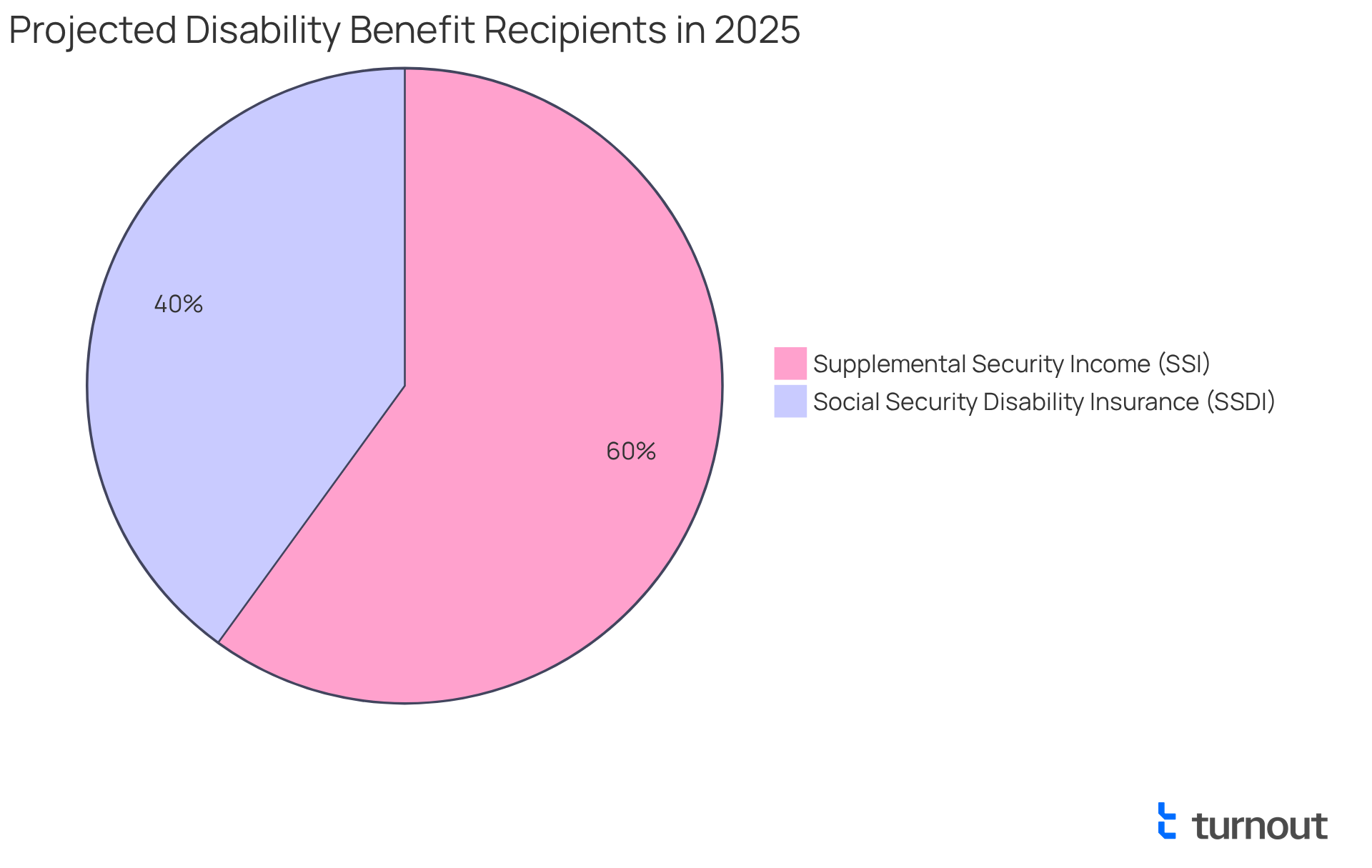
Determine Eligibility Requirements
Navigating the process of qualifying for disability benefits can be overwhelming, but understanding the eligibility criteria is a crucial first step.
For SSDI:
- You must have worked in jobs covered by Social Security.
- It's important to have earned enough work credits—typically 40 credits, with at least 20 earned in the last 10 years.
- Your disability should be severe enough to prevent you from engaging in any substantial gainful activity (SGA), which is set at $1,620 per month for non-blind individuals and $2,700 for statutorily blind individuals in 2025.
For SSI:
- You need to have limited income and resources, generally less than $2,000 for individuals and $3,000 for couples. Note that adjustments to these limits are anticipated for 2025.
- Additionally, you must meet the Administration's definition of disability, which includes having a medically determinable impairment expected to last a minimum of 12 months or result in death.
We understand that these requirements can feel daunting. Approximately 30% of SSDI applicants meet the eligibility criteria on their first attempt. Furthermore, the Social Security Fairness Act, enacted in 2025, retroactively removes specific provisions impacting over 3.2 million individuals, which may influence eligibility and assistance. Staying informed about the latest updates, such as the anticipated 2.5% cost-of-living adjustment (COLA) for 2025, can significantly impact your application process.
It's also essential to remember that the SSA conducts periodic medical reviews of disability claims every 3 to 7 years, which can affect ongoing eligibility. Consulting with experts can provide valuable insights into navigating these complex requirements effectively. You are not alone in this journey; we're here to help you every step of the way.
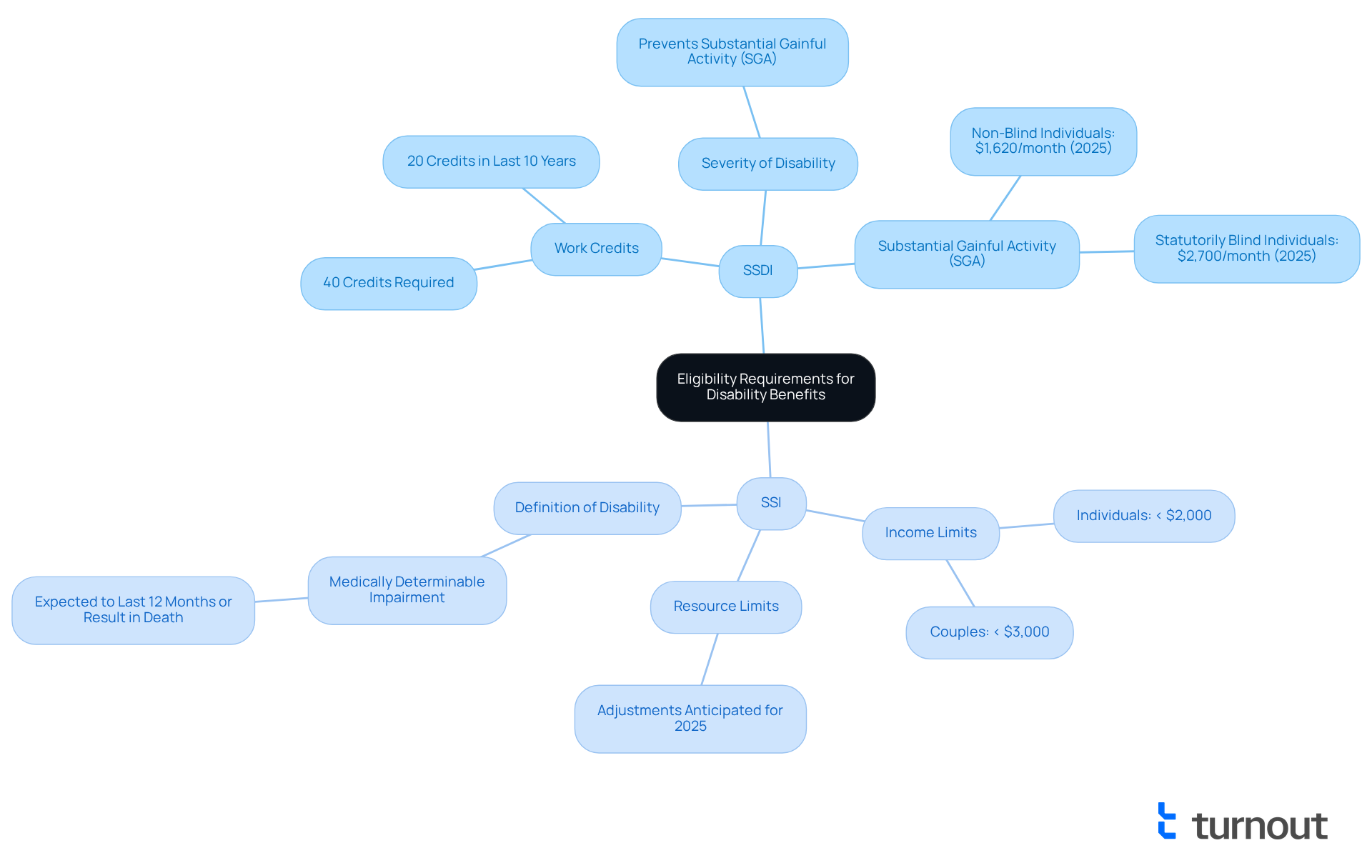
Gather Necessary Documentation
When learning how to apply disability benefits, it’s important to gather several key documents to enhance your chances of approval. We understand that this process can be overwhelming, but having the right information can make a significant difference.
-
Personal Information: This includes your Social Security number, birth certificate, and proof of citizenship or lawful residency.
-
Medical Records: You will need detailed medical documentation from your healthcare providers. This should encompass diagnoses, treatment history, and relevant test results. It’s concerning that approximately 65-70% of initial SSDI requests are denied, often due to incomplete information or insufficient medical evidence. Therefore, thorough documentation is essential. Advocates emphasize, "Having comprehensive medical records is vital; they should clearly outline your condition and how it affects your daily life."
-
Work History: Prepare a comprehensive report detailing your employment over the past 15 years. This should include job titles, duties, and dates of employment, as this information is critical for establishing your eligibility.
-
Financial Information: For SSI applicants, it is necessary to provide information about your income, resources, and any other financial assets.
We know that being thorough and organized when collecting these documents can significantly enhance your prospects for understanding how to apply disability successfully. Many successful applicants often report that having all necessary documentation prepared in advance streamlined their process and reduced delays. For instance, one applicant shared, "I made sure to have every document ready before applying, and it made a world of difference."
By ensuring you have these documents prepared, you can navigate the submission process more effectively and enhance your chances of approval. Remember, you are not alone in this journey; we’re here to help.
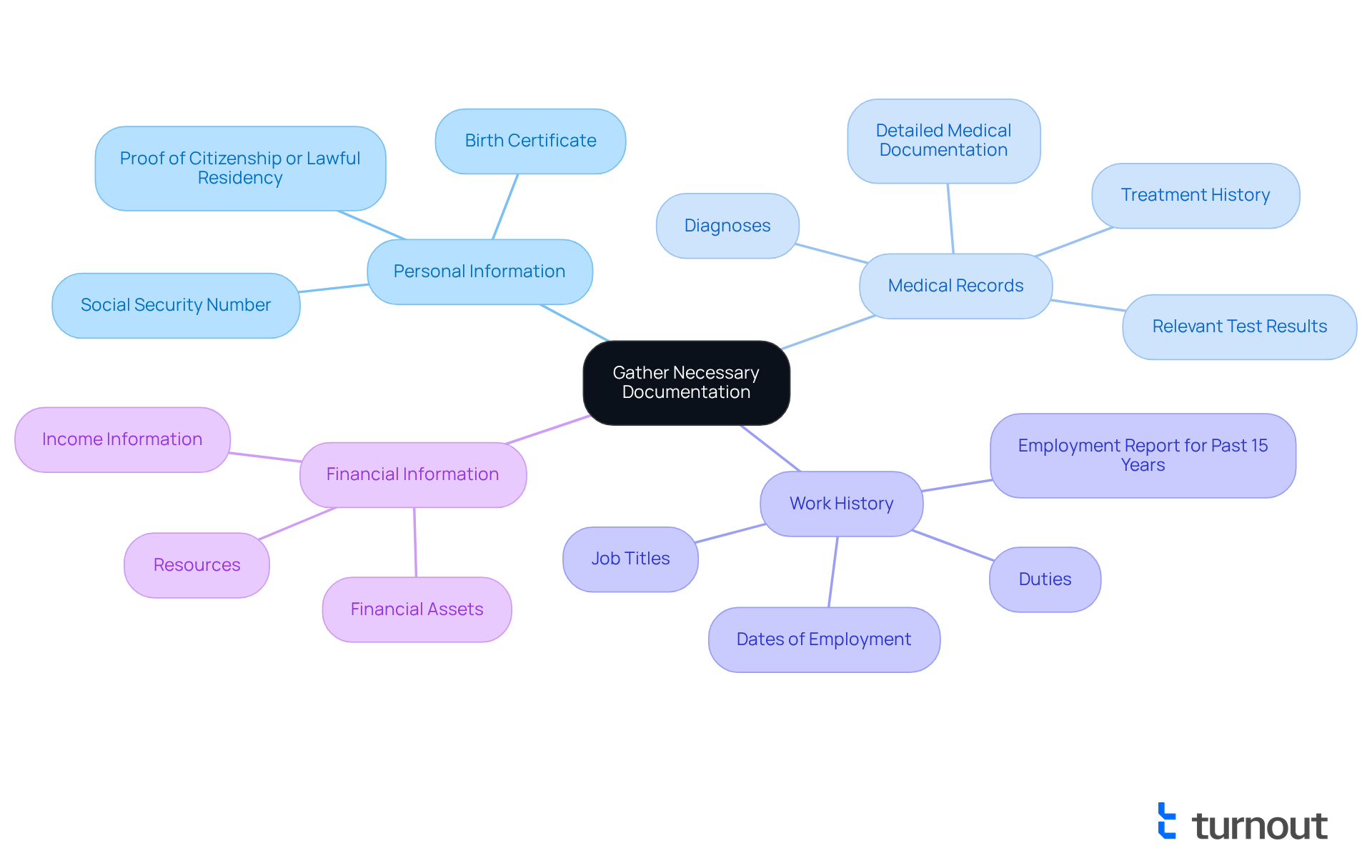
Submit Your Application Effectively
Navigating how to apply disability benefits can feel overwhelming, but we're here to help. To submit your application effectively, consider the following steps:
-
Choose Your Method: You have options for applying—online through the Social Security Administration's website, by phone, or in person at your local Social Security office. Many find that online submissions tend to have quicker processing times, which can ease some of the stress associated with this process.
-
Complete the Form: Take your time to fill out the form thoroughly. Ensuring that all information is accurate and consistent is crucial. Incomplete or inconsistent details can lead to delays, so please review each section carefully. Remember, you deserve to be heard and understood.
-
Attach Documentation: It's important to include all the necessary documentation as specified by the SSA. This may encompass medical records, work history, and any other relevant information. Be sure to keep copies of everything you submit; this can be vital for any follow-ups or appeals you may need to make.
-
Review and Submit: Before you submit, double-check your form for completeness and accuracy. If you're applying online, follow the prompts to finalize your submission. A well-prepared application can significantly decrease processing times, which currently average around 225 days for initial decisions. Additionally, it's worth noting that only 21% of initial SSDI submissions are approved, so thoroughness is essential. If you are facing a severe health condition, don't hesitate to inquire about expedited processing options like Quick Disability Determinations (QDD) or Compassionate Allowances. We understand that delays can lead to significant financial hardship, with approximately 8,000 applicants filing for bankruptcy each year while waiting for a decision.
By correctly following the steps on how to apply disability, you can help avoid unnecessary delays and ensure that your case is processed as efficiently as possible. Remember, you are not alone in this journey, and we are here to support you every step of the way.
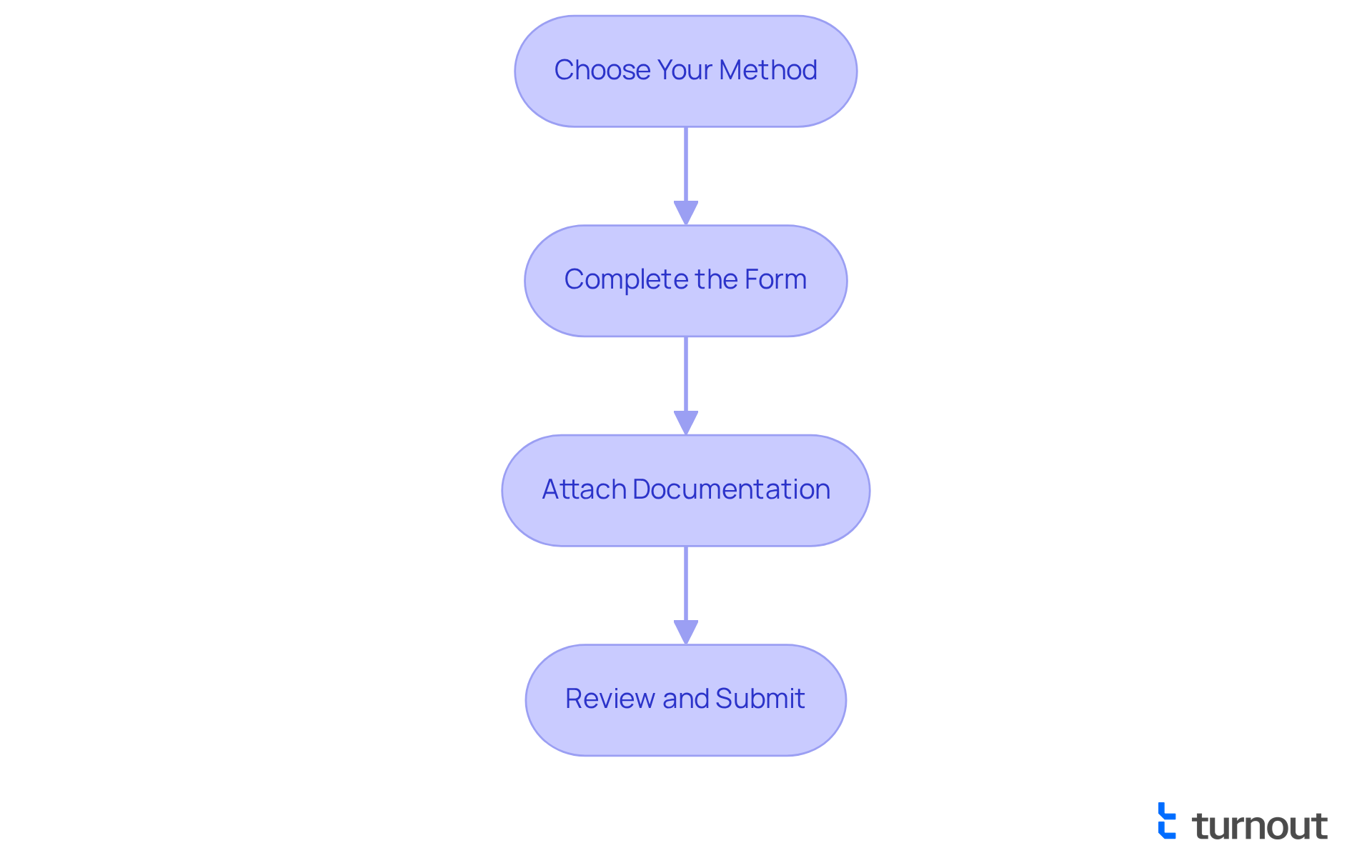
Follow Up on Your Application Status
After submitting your application, we understand that following up is crucial for ensuring timely processing and addressing any potential issues you might face:
- Check Online: Use the Administration's internet portal to track your status. You'll need your registration number for access.
- Call for Updates: Alternatively, you can contact the Social Security Administration at 1-800-772-1213 to inquire about the status of your request directly.
- Be Proactive: If you encounter delays or receive requests for additional information, it's important to respond promptly. Quick action can prevent further processing delays, which have reached an average of 225 days as of November 2023—an 86% increase since 2019.
- Keep Records: Document all communications and submissions meticulously. This organization will help you stay informed and prepared throughout the process.
Regular follow-ups are essential. Research shows that candidates who actively monitor how to apply disability requests are more likely to navigate the system successfully, steering clear of the traps that can lead to denials. In fact, many successful applicants attribute their positive outcomes to diligent follow-up practices, demonstrating how to apply disability claims effectively to ensure they remain on track. As noted by disability advocates, "Advocacy is the bridge between silence and change," highlighting the importance of being proactive in your application process. Remember, failure to follow up can lead to significant financial hardships, as many applicants face delays that can exacerbate their situations. You are not alone in this journey; we are here to help you every step of the way.
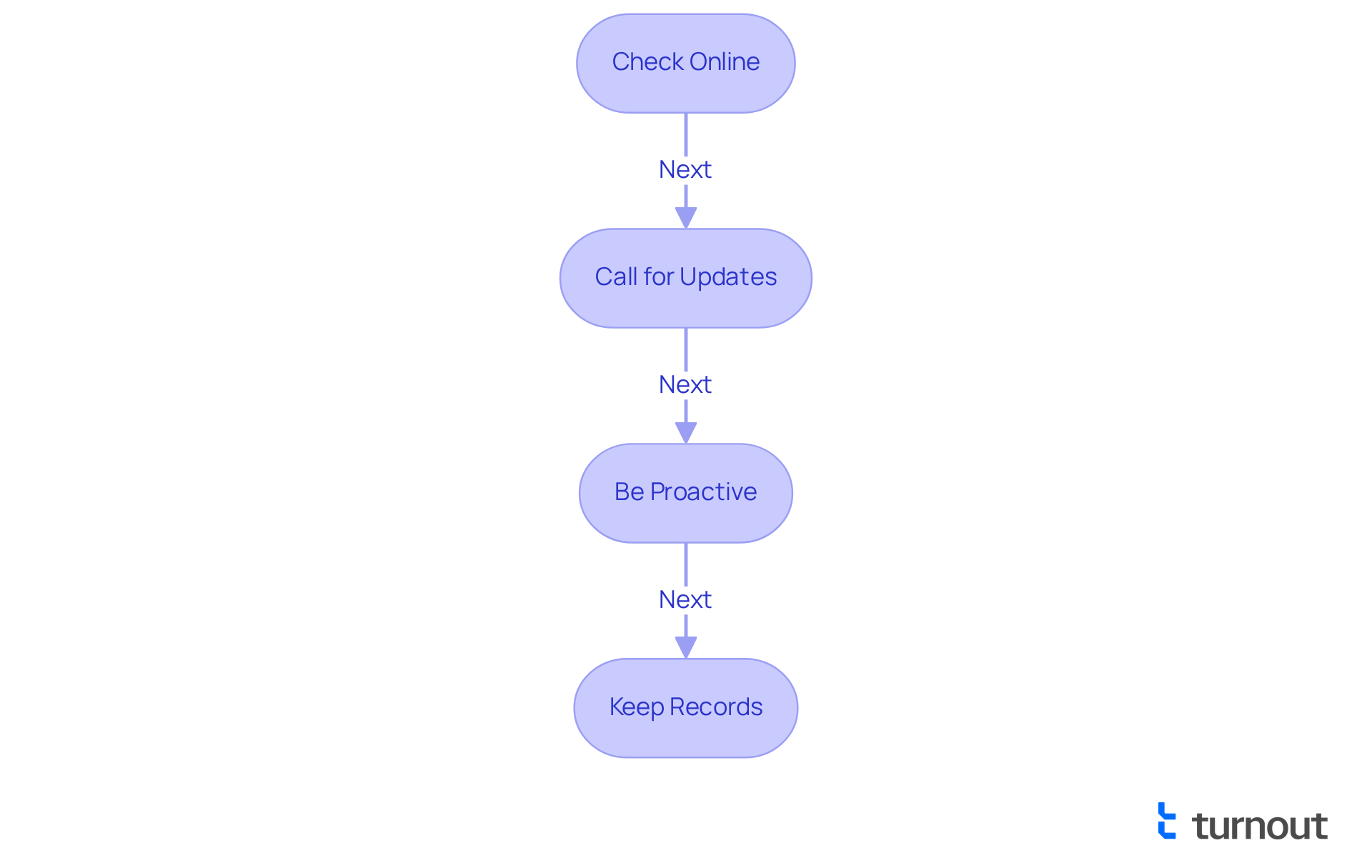
Conclusion
Understanding how to apply for disability benefits is a crucial step toward securing the financial support you need during challenging times. By familiarizing yourself with the types of benefits available, eligibility requirements, necessary documentation, and effective application submission strategies, you can significantly enhance your chances of a successful outcome. We understand that this process may seem daunting, but it is essential to approach it with knowledge and preparation.
This article outlines five key steps:
- Understanding the types of benefits (SSDI and SSI)
- Determining eligibility requirements
- Gathering necessary documentation
- Submitting the application effectively
- Following up on the application status
Each step is designed to equip you with the tools and insights needed to navigate the complexities of the system, ensuring that you present a strong case for your claims. Additionally, the importance of thorough documentation and proactive follow-up cannot be overstated, as these factors play a critical role in the approval process.
Ultimately, the journey to securing disability benefits can be fraught with challenges, but it is also an opportunity for empowerment. By taking informed actions and remaining diligent throughout the process, you can overcome barriers and access the support you need. Embracing this proactive approach not only aids in achieving a successful application but also serves as a reminder that assistance is available, and you are not alone in this journey.
Frequently Asked Questions
What are the two primary types of disability benefits available?
The two primary types of disability benefits are Social Security Disability Insurance (SSDI) and Supplemental Security Income (SSI).
Who qualifies for Social Security Disability Insurance (SSDI)?
To qualify for SSDI, individuals must have worked and paid Social Security taxes, have a medical condition that prevents them from working for at least 12 months, and typically need to have earned 40 work credits, with at least 20 earned in the last 10 years.
What is the expected number of Americans pursuing SSDI assistance in 2025?
In 2025, an estimated 5 million Americans are expected to pursue SSDI assistance.
What financial assistance does Supplemental Security Income (SSI) provide?
SSI provides financial assistance to individuals with limited income and resources, regardless of their work history, particularly benefiting those who are disabled, blind, or aged 65 and older.
How many recipients are projected to benefit from SSI in 2025?
Nearly 7.5 million recipients are projected to benefit from SSI in 2025.
What are the income limits for SSI eligibility?
For SSI eligibility, individuals generally need to have limited income and resources, typically less than $2,000 for individuals and $3,000 for couples, with adjustments anticipated for 2025.
What is the average processing time for SSI or SSDI applications?
The average processing time for SSI or SSDI applications is typically between 3 to 5 months.
What does the term "substantial gainful activity" (SGA) refer to in SSDI eligibility?
Substantial gainful activity (SGA) refers to the level of work activity that is considered significant and productive, which is set at $1,620 per month for non-blind individuals and $2,700 for statutorily blind individuals in 2025.
What is the definition of disability for SSI eligibility?
For SSI eligibility, disability is defined as having a medically determinable impairment expected to last a minimum of 12 months or result in death.
How often does the SSA conduct medical reviews of disability claims?
The SSA conducts periodic medical reviews of disability claims every 3 to 7 years, which can affect ongoing eligibility.




